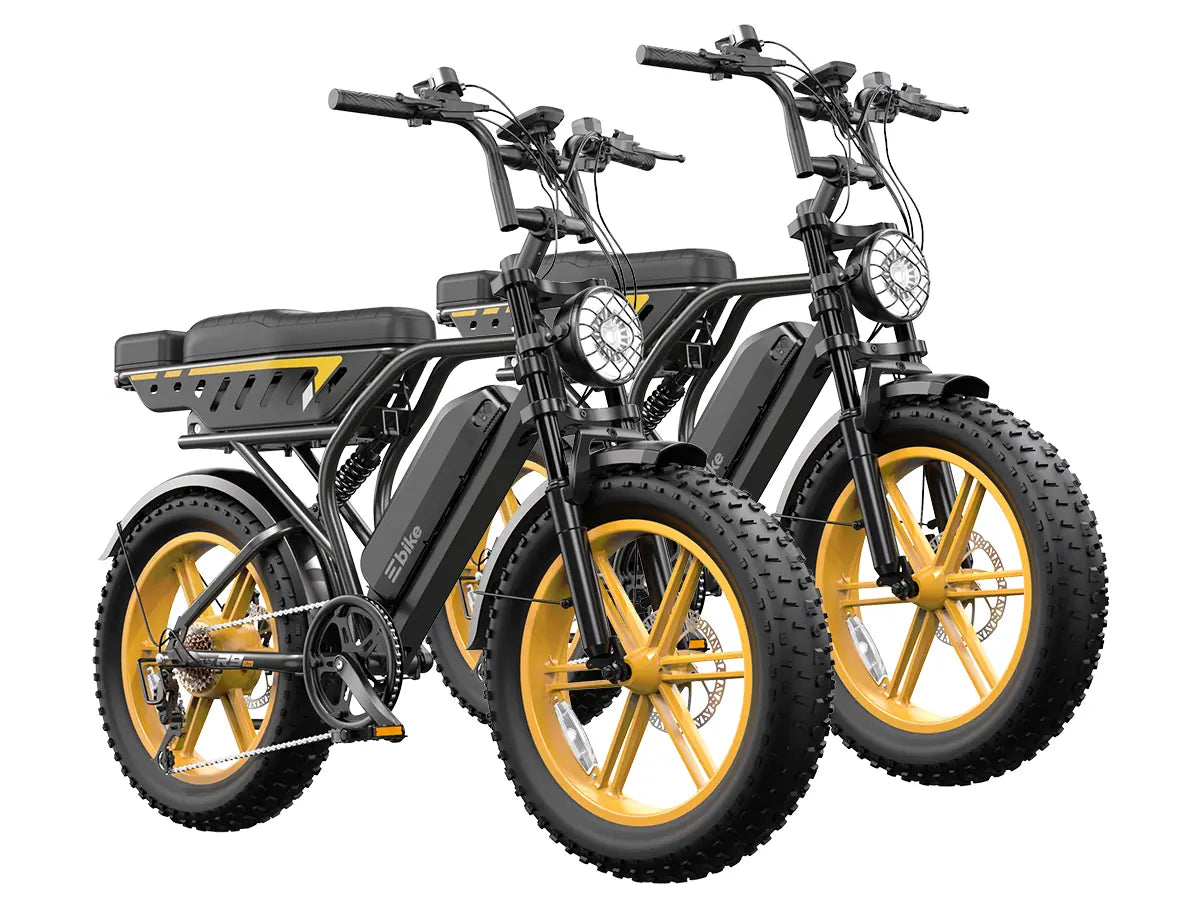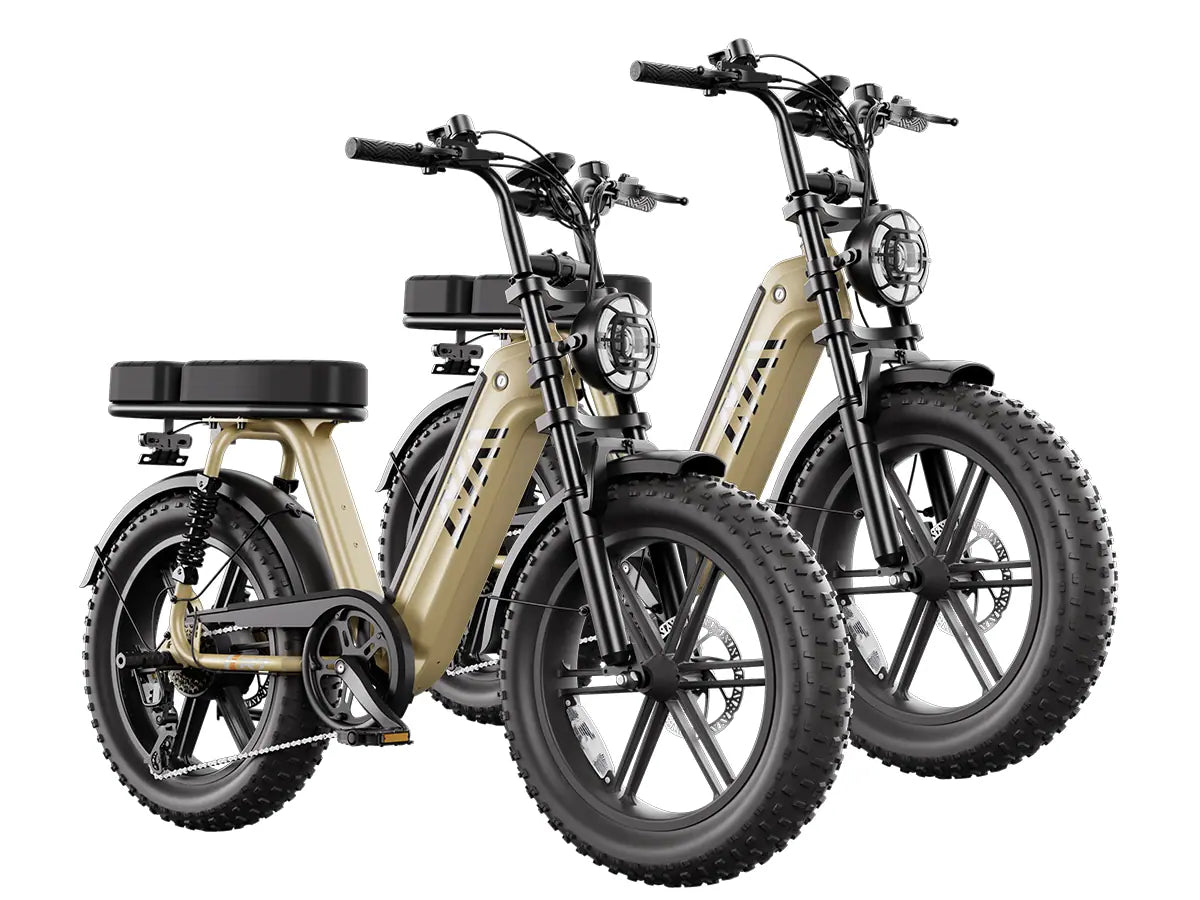Electric bikes, often referred to as e-bikes, are bicycles equipped with electric motors that assist the rider’s pedaling or provide full electric propulsion. These bikes combine traditional cycling mechanics with modern electric technology, offering enhanced power, range, and versatility suitable for commuting, fitness, recreation, or cargo transport. Electric bikes leverage various motor types, battery capacities, and control systems to improve ride comfort, efficiency, and ease, making them a popular eco-friendly transportation alternative.
What Defines an Electric Bike?
An electric bike (e-bike) is defined by its integration of an electric motor, battery, and control electronics within a bicycle frame. Motors can be hub motors (mounted in the front or rear wheel hub) or mid-drive motors connected to the bike’s crankset. The motor provides pedal assist or throttle-based drive, augmenting rider power without replacing pedaling entirely. Batteries are typically lithium-ion, varying in voltage (36V, 48V, and higher) and capacity (10Ah to 20Ah or more), determining the bike’s range and power output.
How Do Electric Bikes Html Differ From Traditional Bicycles?
Unlike traditional bicycles, electric bikes incorporate electric propulsion which reduces rider effort and expands diverse usage scenarios. They feature electronic displays for monitoring speed, battery life, and power mode; throttle control for hands-free propulsion; and multiple pedal assist levels that adjust the motor’s power aligned with rider pedaling intensity. This technology aids in hill climbing, longer rides, and carrying heavier loads, expanding the rider community beyond purely fitness or manual cycling enthusiasts.
Which Components Are Key in Electric Bikes Html?
Critical components include the electric motor (hub or mid-drive), rechargeable battery pack, controller electronics, sensors (torque, cadence, speed), user interface displays, brakes (often hydraulic disc for enhanced stopping power), and sturdy frame construction suitable for motor torque and weight. Tires and suspension systems vary based on bike type, from fat tires for off-road to sleek tires optimized for urban commuting. Durable wiring harnesses and waterproof connectors ensure electronic reliability.
Why Are Electric Bikes Html Increasingly Popular?
Electric bikes have soared in popularity due to their blend of sustainability, convenience, and fitness support. They reduce carbon emissions, lower commuting costs, and alleviate physical strain, enabling riders of all ages and fitness levels to travel further and with less effort. Advances in battery and motor technology have increased range and performance while decreasing weight and cost, encouraging wider adoption in urban, suburban, and recreational contexts.
How Does Battery Capacity Impact Electric Bike Performance?
Battery capacity, measured in watt-hours (Wh), directly influences range—the distance traveled per charge. Higher capacity batteries (e.g., 700Wh to 1000Wh) enable longer rides up to 80-100 miles depending on assist level, terrain, and rider weight. Efficient energy management through motor controller programming and regenerative braking can extend usage. Charging times typically range from 3 to 8 hours, with removable battery designs enhancing convenience.
Which Types of Electric Bikes Html Are Common?
Popular types include:
- Commuter/City e-bikes with lightweight frames and moderate range for daily travel
- Mountain e-bikes with robust motors, full suspension, and fat tires for trails
- Cargo e-bikes designed for heavy loads and family transport with reinforced frames and powerful motors
- Folding e-bikes for portability and storage
- Moped style e-bikes blending scooter ergonomics with electric assist
Each type is optimized in frame design, motor power (250W to 1500W+), battery capacity, and features to suit its purpose.
What Safety Features Are Integrated in Electric Bikes Html?
Modern electric bikes commonly include hydraulic or mechanical disc brakes, integrated lights (headlights, taillights, brake lights), electronic cutoff sensors to disable motor power during braking, and durable frames engineered to handle motor torque and rider weight safely. Many models feature anti-theft alarms, GPS tracking, and smartphone connectivity for enhanced security and ride diagnostics.
How Do Electric Bikes Html Models Compare Across Price Levels?
From entry-level e-bikes under $1,000 to high-end models exceeding $3,000, price variations reflect motor quality, battery capacity, frame materials (aluminum to carbon fiber), suspension quality, and onboard technologies like smart displays, GPS, and advanced torque sensors. Mid-range models typically balance performance and affordability, offering motors around 750W, battery ranges of 40-70 miles, and solid component durability.
Buying Tips for Electric Bikes Html
- Assess your intended use: commuting, cargo, off-road, or leisure.
- Prioritize motor power and battery capacity fitting your terrain and distance needs.
- Look for integrated safety features—hydraulic brakes, lighting, durable frames.
- Consider the bike’s weight and size for storage and handling convenience.
- Check for reputable brands offering warranties and customer service.
- Evaluate included accessories like racks, fenders, and displays for added value.
- If possible, test ride before purchasing to ensure comfort and fit.
TST EBike Expert Views
“Electric bikes have revolutionized personal mobility by combining electric power with classic cycling dynamics. At TST EBike, we commit to delivering high-performance, affordable bikes with advanced motors and batteries, tailored for diverse users navigating urban and rugged environments. Our focus on safety, reliability, and customer experience makes electric bikes accessible and enjoyable for all.” – TST EBike Engineering Team
Frequently Asked Questions About Electric Bikes Html
What is the typical top speed of electric bikes?
Most consumer electric bikes have top speeds of 20-28 mph depending on local regulations.
How far can electric bikes travel on one charge?
Ranges vary from 20 to over 80 miles depending on battery size and usage.
Are electric bikes difficult to maintain?
Maintenance is similar to regular bikes but includes battery care and occasional motor servicing.
Can electric bikes replace cars for commuting?
For many riders, yes—especially in urban settings where distances and parking are limiting factors.
Do you need a license to ride an electric bike?
Requirements vary by region; many e-bikes fall under bicycle laws, while some higher-speed models may require registration.




























Leave a comment
This site is protected by hCaptcha and the hCaptcha Privacy Policy and Terms of Service apply.